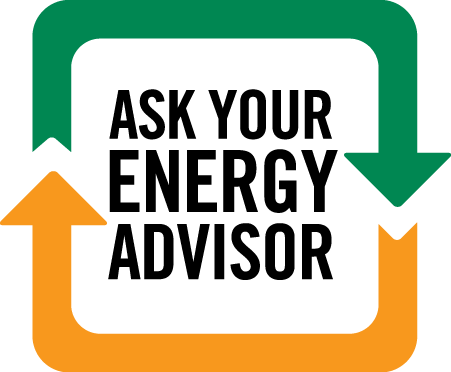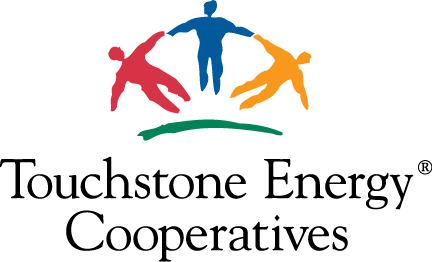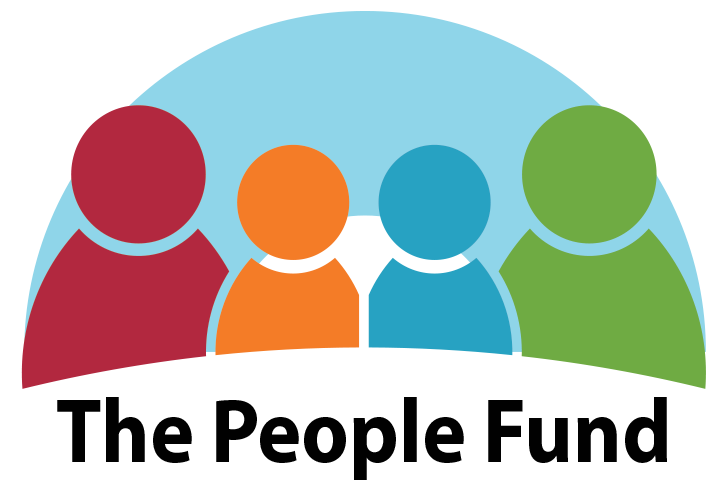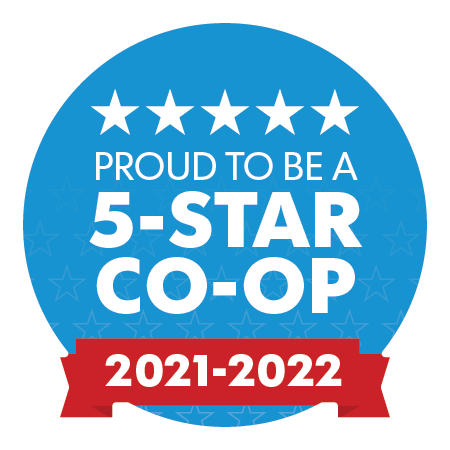Protecting People, Trees, and Power Lines
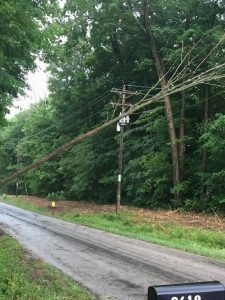 As a certified TreeLine USA utility, our goal is to provide safe, reliable utility service while also supporting abundant, healthy trees.
As a certified TreeLine USA utility, our goal is to provide safe, reliable utility service while also supporting abundant, healthy trees.
Trees play an important role in the health and beauty of our communities, and we are committed to best practices that protect them while we work. Our process involves pruning back branches and other vegetation to keep rights-of-way clear and removing trees that are dangerously close to falling on a power line or pole.
Why does vegetation management matter?
Reliability
In addition to reducing power interruptions, well-maintained rights of way allow easier access for personnel and equipment, making routine maintenance and outage restoration more safe and efficient. This also helps ensure that cooperative members do not incur unnecessary costs of repairing damages and restoring outages caused by trees and undesired vegetation.
Why not bury all utility lines underground?
Maintaining Tree Health
Our Vegetation Management Contractors follow guidelines set forth by the Utility Arborist Association, Tree Care Industry Association, and the National Electric Safety Code. Trees that are pruned according to these standards are much more likely to maintain a healthy structure and appearance after pruning is complete.
Our crews are trained and qualified to recognize and rectify hazardous vegetation-related issues while minimizing the risks to our communities’ beautiful trees.
How much does Consolidated remove from trees?
- Tree Species
- Growth Rate (how much the tree will grow after pruning)
- Wood Strength (likelihood of limb failure under snow, ice, or strong wind)
- Conductivity (how well the wood can conduct electricity)
- Branch Size (Larger-diameter limbs tend to be heavier and pose a greater risk of long-term, costly power interruptions.)
- Line Voltage (higher voltage lines require greater clearance)
- Multi-Phase Lines
- Tree location in relation to protective devices, electrical equipment, and critical points in the circuit.
- Tree location in relation to general public safety.
What pruning guidelines does Consolidated follow?
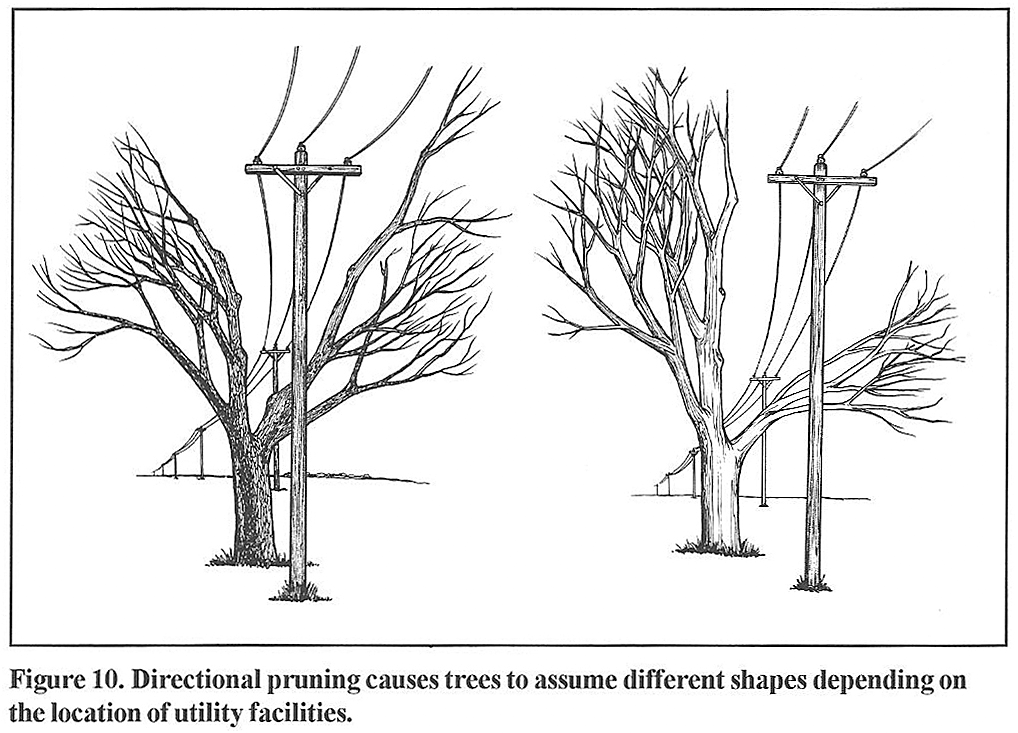 Our crews avoid “topping” trees, a practice that leaves trees vulnerable to decay and infestation, and leads to increased, undesirable regrowth. After a tree has been “topped,” regrowth forms as water-sprouts – growth shoots that originate from growth nodes on the surface or buried in the old wood of a plant. These sprouts (pictured below) are very weak and are likely to fail and cause power interruption in the future.
Our crews avoid “topping” trees, a practice that leaves trees vulnerable to decay and infestation, and leads to increased, undesirable regrowth. After a tree has been “topped,” regrowth forms as water-sprouts – growth shoots that originate from growth nodes on the surface or buried in the old wood of a plant. These sprouts (pictured below) are very weak and are likely to fail and cause power interruption in the future. 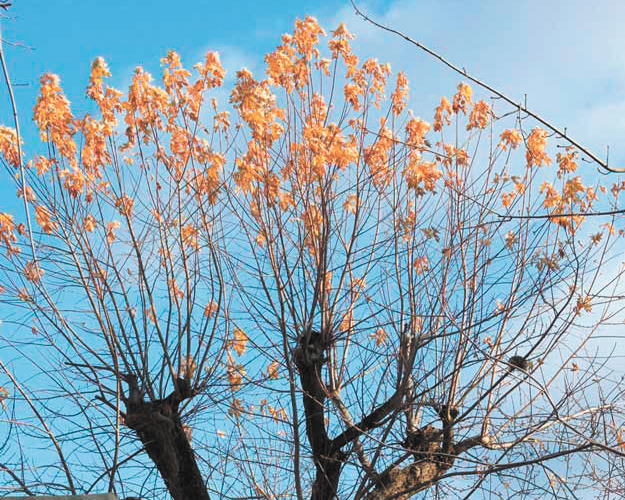
Vegetation Management by Equipment Type
Our strategies for vegetation management vary based on the type of line and equipment. Please read through the information below to understand your role in vegetation management, as well as the guidelines we follow for primary, secondary and service lines, and pad-mount equipment.
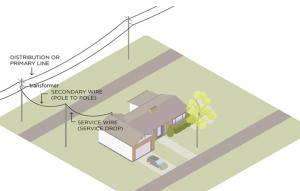
Vegetation Management for Primary Conductors
The minimum clearance shall be eight feet from the closest conductor for slow-growing species (including but not limited to oaks and conifers except white pine).
The minimum clearance shall be ten (10) feet from the closest conductor for medium-growing species (including but not limited to hickory, white pine, sugar maple, and catalpa).
The minimum clearance shall be fifteen (15) feet from the closest conductor for medium-to-fast-growing species (including but not limited to elm, ailanthus, Hackberry, willow, cottonwood and silver maple).
In certain situations, licensed applicators will manage vegetation by targeting incompatible brush and tree species with EPA-approved herbicide application and leave the treated brush standing for effective control. This approach, carried out by skilled professionals, ensures safety and regulatory compliance.
Vegetation Management for Service and Secondary Lines
Secondary lines (also called “secondary wires” or “secondary conductors”) are located between the cooperative-owned pole with a transformer and the final Cooperative-owned pole. Consolidated will remove all necessary limbs and branches by natural pruning methods to provide swing-free clearance from all secondary conductors.
Individual service lines (also called “service wires” or “service drops”) span from the last Cooperative-owned pole to the member’s meter. Service lines are to be cleared only if authorized by our system arborist. Pruning of service and secondary lines is only completed during routine vegetation maintenance. Consolidated does not remove trees along service or secondary lines. Tree removal is the responsibility of the member.
If you plan to prune or remove trees close to service or secondary lines, please contact us first. We will schedule a line crew to disconnect and drop line temporarily so that your work can be completed safely. There is no cost to have this done during regular business hours.
Vegetation Management for Surface-Mounted (pad-mount) Equipment
No trees or shrubs should be planted within 10 feet of the access to the transformer, and vegetation must remain four feet from the other three sides. Consolidated does not offer hazard tree removal for surface-mounted equipment – it is the members responsibility to hire a qualified contractor to complete necessary work.
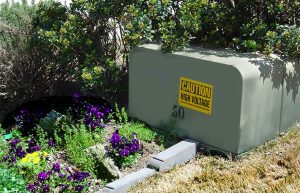
The above image shows an example of vegetation that is too close to a surface-mounted transformer.
Plan before you plant.
When it comes to planting, location is everything. Trees and shrubs that are planted properly can provide beauty and shade to your landscape, or serve as a wind-block during winter. However, haphazardly planting trees or shrubs near overhead or underground power lines could endanger your home and hurt our ability to provide you with safe, reliable service in the future.
If you are planning to plant trees or shrubs in your yard, please take your time, and make sure you know where all underground and overhead utilities are located.
Underground Utilities – Call 811!
Overhead Power Lines – Right Tree, Right Place

Access to Equipment
For more information and tree-planting guides, visit the Arbor Day Foundation’s website.
Proper vegetation management is one of the key strategies to maintain safe, reliable, and affordable electric service for our members. Click or tap the dropdown arrows below to learn more.
Safety
We ask that members never attempt to clear trees or branches on or around powerlines. Electric utility lines carry voltages much greater than standard household voltages, and they can cause serious harm or death if you are not working in the right way or with the right equipment. Electrocution can occur even if you are not touching the line directly, as tree limbs or other debris could be conducting electricity.
Consolidated is committed to the safety of our employees, members, and communities, and we use qualified line-clearance contractors who are specially trained for this work. For your safety and the safety of others, please contact us before completing any vegetation management work in the vicinity of our power lines, and do not attempt to remove any debris from a powerline yourself. Call us at 800-421-5863 for help.
Reliability
In addition to reducing power interruptions, well-maintained rights of way allow easier access for personnel and equipment, making routine maintenance and outage restoration more safe and efficient. This also helps ensure that cooperative members do not incur unnecessary costs of repairing damages and restoring outages caused by trees and undesired vegetation.
Why not bury all utility lines underground?
Maintaining Tree Health
Our Vegetation Management Contractors follow guidelines set forth by the Utility Arborist Association, Tree Care Industry Association, and the National Electric Safety Code. Trees that are pruned according to these standards are much more likely to maintain a healthy structure and appearance after pruning is complete.
Our crews are trained and qualified to recognize and rectify hazardous vegetation-related issues while minimizing the risks to our communities’ beautiful trees.
How much does Consolidated remove from trees?
- Tree Species
- Growth Rate (how much the tree will grow after pruning)
- Wood Strength (likelihood of limb failure under snow, ice, or strong wind)
- Conductivity (how well the wood can conduct electricity)
- Branch Size (Larger-diameter limbs tend to be heavier and pose a greater risk of long-term, costly power interruptions.)
- Line Voltage (higher voltage lines require greater clearance)
- Multi-Phase Lines
- Tree location in relation to protective devices, electrical equipment, and critical points in the circuit.
- Tree location in relation to general public safety.
What pruning guidelines does Consolidated follow?
 Our crews avoid “topping” trees, a practice that leaves trees vulnerable to decay and infestation, and leads to increased, undesirable regrowth. After a tree has been “topped,” regrowth forms as water-sprouts – growth shoots that originate from growth nodes on the surface or buried in the old wood of a plant. These sprouts (pictured below) are very weak and are likely to fail and cause power interruption in the future.
Our crews avoid “topping” trees, a practice that leaves trees vulnerable to decay and infestation, and leads to increased, undesirable regrowth. After a tree has been “topped,” regrowth forms as water-sprouts – growth shoots that originate from growth nodes on the surface or buried in the old wood of a plant. These sprouts (pictured below) are very weak and are likely to fail and cause power interruption in the future. 
Vegetation Management by Equipment Type
Our strategies for vegetation management vary based on the type of line and equipment. Please read through the information below to understand your role in vegetation management, as well as the guidelines we follow for primary, secondary and service lines, and pad-mount equipment.

Vegetation Management for Primary Conductors
The minimum clearance shall be eight feet from the closest conductor for slow-growing species (including but not limited to oaks and conifers except white pine).
The minimum clearance shall be ten (10) feet from the closest conductor for medium-growing species (including but not limited to hickory, white pine, sugar maple, and catalpa).
The minimum clearance shall be fifteen (15) feet from the closest conductor for medium-to-fast-growing species (including but not limited to elm, ailanthus, Hackberry, willow, cottonwood and silver maple).
In certain situations, licensed applicators will manage vegetation by targeting incompatible brush and tree species with EPA-approved herbicide application and leave the treated brush standing for effective control. This approach, carried out by skilled professionals, ensures safety and regulatory compliance.
Vegetation Management for Service and Secondary Lines
Secondary lines (also called “secondary wires” or “secondary conductors”) are located between the cooperative-owned pole with a transformer and the final Cooperative-owned pole. Consolidated will remove all necessary limbs and branches by natural pruning methods to provide swing-free clearance from all secondary conductors.
Individual service lines (also called “service wires” or “service drops”) span from the last Cooperative-owned pole to the member’s meter. Service lines are to be cleared only if authorized by our system arborist. Pruning of service and secondary lines is only completed during routine vegetation maintenance. Consolidated does not remove trees along service or secondary lines. Tree removal is the responsibility of the member.
If you plan to prune or remove trees close to service or secondary lines, please contact us first. We will schedule a line crew to disconnect and drop line temporarily so that your work can be completed safely. There is no cost to have this done during regular business hours.
Vegetation Management for Surface-Mounted (pad-mount) Equipment
No trees or shrubs should be planted within 10 feet of the access to the transformer, and vegetation must remain four feet from the other three sides. Consolidated does not offer hazard tree removal for surface-mounted equipment – it is the members responsibility to hire a qualified contractor to complete necessary work.

The above image shows an example of vegetation that is too close to a surface-mounted transformer.
Plan before you plant.
When it comes to planting, location is everything. Trees and shrubs that are planted properly can provide beauty and shade to your landscape, or serve as a wind-block during winter. However, haphazardly planting trees or shrubs near overhead or underground power lines could endanger your home and hurt our ability to provide you with safe, reliable service in the future.
If you are planning to plant trees or shrubs in your yard, please take your time, and make sure you know where all underground and overhead utilities are located.
Underground Utilities – Call 811!
Overhead Power Lines – Right Tree, Right Place

Access to Equipment


